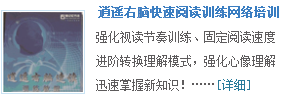用来引导特殊疑问句,表示时间,地点,方式,原因等。
常见的有:when,where,how,why等。
疑问副词的用法:
1.疑问副词是问何时、何地、如何、因何的副词,主要有when, where, how, why。
2.疑问副词用在句首。
How long have you been staying in America?
你在美国待多久了?
3.疑问副词在句中引导名词子句。
I want to know where she has gone.
我想知道她去哪里了。
4.疑问副词后接不定词构成的名词片语,在句中可以作主词、受词或主词补语。
How to solve the problem gives him a bad headache.
如何解决这个问题使他伤透脑筋。
(How to solve the problem作主词。)
I don't know how to answer the question.
我不知道如何回答这个问题。
(how to answer the question作受词。)
The patient is in urgent need the medicine, but the problem is where to get it.
这个病人急需这种药,但问题是哪里能找到。
(where to get it作主词补语。)
5.疑问副词引导的名词子句可作主词、受词或主词补语。
When we are to start the competition hasn't fixed yet.
我们什么时候开始比赛还没有定下来。
(When we are to start the competition作主词。)
She asked her husband where he had been.
她问她丈夫去哪里了。
(where he had been 作受词。)
The question is when we can finish our work.
问题是我们何时能完成我们的工作。
(when we can finish our work作主词补语。)
疑问代词与疑问副词的区别:
1. 疑问代词做对陈述句的主语,宾语或定语提问,即做句子的主语,宾语或定语,如what, who/ whom, whose.
eg. Who is talking ? What can you see?
Whose shirt is this?
2.疑问副词对时间,地点,方式等状语提问,如when, where, how 等.
eg. When is your birthday? Where are you going?
How do you know?
常见的疑问代词:what who which whom(只做宾语)
疑问副词:how where when
还有whether是疑问连接词。
相关初中英语知识点:人称代词
人称代词:
人称代词是用来表示人的代词,有单数和复数之分,有主格和宾格之分。人称代词的主格在句中作主语;人称代词的宾格在句中作宾语,也可作动词或介词的宾语。
主格:I, we, you, he, she, it, they在句子中作主语
宾格:me, us, you, him, her, it, them在句子中作宾语
He and I are in the same class. 我和他在同一个班级。
Can you see them in the street? 你能看见他们在街上吗?
人称代词在句中的作用:
1)主格作主语。如:
I am Chinese.我是中国人。
2)宾格作宾语,放在及物动词或介词之后,有时还可以在口语中用作表语。如:
①I don't know her.我不认识她。(动词宾语)
②What's wrong with it?它怎么了?(介词宾语)
③-Open the door,please.
3)作表语
作表语一般用主格, 但在口语中也常用宾格
I saw at once it was her.我一下子看到了她。
It's me.请开门,是我。(表语)
4)作同位语
作同位语是用宾格
We ,us ,there,will be able to fulfill the task.我们三人就能完成这项任务。
主宾格的替换:
一、宾格代替主格
a.在简短对话中,当人称代词单独使用或在not后,多用宾语。
---- I like English. --我喜欢英语。
---- Me too. --我也喜欢。
---- Have more wine? --再来点酒喝吗?
---- Not me. --我可不要了。
b.在表示比较的非正式的文体中,常用宾格代替主格。但如果比较状语的谓语保留,则主语只能用主格。
He is taller than I/me.
He is taller than I am.
二、主格代替宾格
a.在介词but,except后,有时可用主格代替宾格。
b.在电话用语中常用主格。
---- I wish to speak to Mary. --我想和玛丽通话。
---- This is she. --我就是玛丽。
注意:在动词be或to be后的人称代词视其前面的名词或代词而定。
I thought it was she. 我以为是她。 (主格----主格)
I thought it to be her. (宾格----宾格)
I was taken to be she. 我被当成了她。 (主格----主格)
They took me to be her.他们把我当成了她。 (宾格----宾格)
人称代词用法:
一、人称代词的宾格在句中作宾语,往往用在动词或介词后面。
例:1.Listen to me,Dad.
2.Peter is sitting behind me.
3.Let me got here now.
4.Give me an orange,please.
二、you既是"你"或"你们"的主格,又是它们的宾格;her既是"她"的所有格,又是它的宾格。我们可以根据它们在句子中的位置来判断它们属于主格、所有格还是宾格。
三、and是一个我们常用来连接两个词的连接词。它虽然与介词with有同样的意思,但它的前后可以是人称代词的主语,也可以是人称代词的宾格,而with只能跟人称代词的宾格。
如:You and I are going to school.
You are going to school with me.
四、第三人称代词单数:er,sie,es 及 复数 sie 可指代人或物以及其它抽象概念等。此时,它们的性,数,格要与被指代的名词一致。
人称代词用法口诀:
人称代词分主/宾,只有八对要区分。
你(们)、它主/宾同一形,其余主/宾须分清。
谓语之前主格填,动/介之后宾格跟,
口语运用最灵活,表语也可用宾格。
人称代词并列现,注意顺序礼貌见,
二一、三一、二三一,第一人称最谦虚,
若把错误责任担,第一人称须当先。
动前主格动后宾,名前形容介后宾;
如果名词含在内,选用名物代就行。
人称代词并列用法的排列顺序:
1)单数人称代词并列作主语时,其顺序为:
第二人称→第三人称→第一人称
即:you and I;he/she/itandI;you,he/she/it and I
2)复数人称代词作主语时,其顺序为:
第一人称→第二人称→第三人称
即:we and you;you and they;we,you and they
人称代词的变格形式:
人称 | 单数 | 复数 | ||
主格 | 宾格 | 主格 | 宾格 | |
第一人称 | I | me | we | us |
第二人称 | you | you | you | you |
第三人称 | he | him | they | them |
人称代词的形式:
在一般现在时中,当主语是第三人称单数时,谓语动词要用第三人称单数形式,即常在动词原形后加-s或-es
一、人称代词he,she,it是第三人称单数。如:
He likes watching TV. 他喜欢看电视。
She has lunch at twelve. 她十二点吃午餐。
It looks like a cat. 它看起来像只猫。
二、单个人名、地名或称呼作主语;是第三人称单数。如:
①Han Mei looks like her mother. 韩梅看起来像她的母亲。
②Beijing is in China. 北京在中国。
③Uncle Wang often makes cakes. 王叔叔经常做蛋糕。
三、单数可数名词或"this / that / the+单数可数名词"作主语时,是第三人称单数。如:
①A horse is a useful animal. 马是有用的动物。
②This book is yours. 这本书是你的。
③That car is red. 那辆小汽车是红色的。 ④The cat is Lucy's. 这只猫是露茜的。
四、不定代词someone,somebody,nobody,everything,something等及指示代词this,that作主语时,是第三人称单数。如:
①Everyone is here. 大家到齐了。
②There is something wrong with the watch. 这块手表有毛病。
③This is a pen. 这是一支钢笔。
④That is an eraser. 那是一块橡皮擦。
五、不可数名词作主语时为第三人称单数。如:
①The milk is in the glass. 牛奶在玻璃杯里。
②The bread is very small. 那面包很小。
六、当数字或字母作主语时,看作第三人称单数。如:
①"6" is a lucky number. "6"是个吉利数字。
②"I" is a letter. "I"是个字母。
相关初中英语知识点:疑问代词
疑问代词:
疑问代词在句中起名词的作用,用来构成疑问句。常用的疑问代词有:
what, who, whose, whom, which, whatever, whichever, whoever, whomever
疑问代词在句中应位于谓语动词之前,没有词性和数的变化,除who之外也没有格的变化。
what, which, whose还可作限定词。
Whose books are these on the desk?
桌上的书是谁的?
What was the directional flow of U. S. territorial expansion?
美国的领土扩张是朝哪个方向的?
What events led to most of the east of the Mississippi River becoming part of the United States?
哪些事件使密西西比河以东的大部分土地归属于美国?
疑问代词在句中起名词词组的作用,用来构成疑问句。疑问代词有下列几个:
指 人: who, whom, whose
指 物: what
既可指人又可指物: which
疑问代词说明:
一、无论是做疑问代词还是限定词,which 和 what 所指的范围不同。what所指的范围是无限的,而which则指在一定的范围内,例如:
Which girls do you like best?
你喜欢哪几个姑娘?
What girls do you like best?
你喜欢什么样的姑娘?
二、Whom是who的宾格,在书面语中,它作动词宾语或介词宾语,在口语中作宾语时,可用who代替,但在介词后只能用whom, 例如:
Who(m) did you meet on the street?
你在街上遇到了谁?(作动词宾语)
Who(m) are you taking the book to?
你要把这书带给谁?(作介词宾语,置句首)
To whom did you speak on the campus?
你在校园里和谁讲话了?(作介词宾语,置介词 后,不能用who取代。)
三、疑问代词用于对介词宾语提问时,过去的文体中介词和疑问代词通常一起放在句首,现代英语中,疑问代词在句首,介词在句未,例如:
For what do most people live and work?大部分人生活和工作的目的是什么?(旧文体)
What are you looking for?你在找什么?(现代英语)
四、疑问代词还可引导名词性从句,例如:
I can't make out what he is driving at.
我不知道他用意何在。
Can you tell me whose is the blue shirt on the bed?
你能告诉我床上的蓝衬衣是谁的吗?
Much of what you say I agree with, but I cannot go all the way with you.
你说的我大部分同意,但并不完全赞同。
疑问代词用法:
1. 疑问代词有who, whom, whose, which和what, 都是用来构成疑问句的:
Who is calling? 谁打电话来?
Whom do you want to speak to? 你想找谁接电话?
作主语时用who,作宾语时用whom,在口语中用who作宾语时也不少:
Who did you mean? 你指的是谁?
Who are you talking about? 你们在讲谁?
直接跟在介词后时只能用whom:
With whom did you come? 你和谁一道来的?
(口语中说“Who did you come with?时更多一些。)
2. 其他三个疑问代词可用作:
1)主语:
What’s your address? 你的地址怎样写?
Whose is better? 谁的好一些?
Which of these is yours? 哪一本是你的?
2)宾语:
What do you mean? 你是什么意思?
Which do you like better? 哪一个你更喜欢一些?
Whose have you chosen? 你选了谁的?
3)表语:
What’s her name? 她叫什么名字?
Whose is it? 这是谁的?
4)定语(这样用时有些字典标作形容词):
What time does the train leave? 这列火车什么时候离开?
Which room shall we stay in? 我们住哪间房?
Whose passport is this? 这是谁的护照?
相关初中英语知识点:特殊疑问句
特殊疑问句:
以特殊疑问词开头,对句中某一成分提问的句子叫特殊疑问句。
常用的疑问词有:what、who、whose、which、when、where、how、why等。
特殊疑问句的基本结构是“疑问词+一般疑问句”。
其回答应当是具体的。特殊疑问句句末一般用降调。
例如:How do I get there?
Why not?
What about the sports news?
常用疑问词可先分为3种:
疑问代词:
what(什么)
who(谁,作主语)
which(哪个,在一定范围内选择)
whose(谁的,指附属关系)
whom(谁,作宾语)
疑问副词:
when(何时,询问时间)
where(何地,询问地点)
why(为什么,询问原因)
how(如何,询问手段,方式,工具以及程度)
疑问形容词:
what(which,whose)+名词
例词:
what time(什么时候) what colour(什么颜色)... ...
how much(多少) how long(多长)...
特殊疑问句的特点:
一、 特殊的疑问词:
特殊疑问句要由疑问代词或疑问副词开头,询问的内容不同, 使用的疑问词也不同。
我们学过的疑问词有what(询问事物), how much(询问价格), what time (询问时间,尤其是点钟), what kind of(询问种类), why(询问原因),who(询问人), where(询问地点) 等等。如:
?What is this? 这是什么?
?It's a key. 这是一把钥匙。
?How much is it? 这个多少钱?
?It's twenty dollars. 二十美元。
?What kind of movies do you like? 你喜欢哪一类型的电影?
?I like action movies. 我喜欢动作片。
二、特殊的语序:
特殊疑问句由疑问词开头,其构成是“疑问词 + 一般疑问句”。如:
What time is it? 现在几点钟?
Who is your teacher? 谁是你的老师?
特殊疑问句有两种语序:
1.如疑问词作主语或主语的定语,即对主语或主语的定语提问,其语序是陈述句的语序:
Who is singing in the room?
whose bike is broken?
2.如疑问词作其他成分,即对其他成分提问,其语序是:
特殊疑问词+一般疑问句(特殊疑问词+be/助动词/情态动词+主语+谓语)
What does she like?
What class are you in?
Where are you from?
What time does he get up every morning?
How do you know?
三、特殊的答语:
特殊疑问句不能用yes, no来回答,而应根据它所询问的内容直接做出回答才行。如:
? What time is it, please? 请问几点了?
? It's 7:30. 七点半了。
? Where are they? 他们在哪儿?
?They're in the playground. 他们在操场上。
?What's your favorite subject? 你最喜爱的科目是什么?
?English. 英语。
四、 特殊的语调:
一般情况下,特殊疑问句要用降调(?)来读。如:
Who's ?that?
How old is?Jack?
本文来自:逍遥右脑记忆 http://www.jiyifa.com/chuzhong/258103.html
相关阅读:小升初英语写作要领之词语简化技巧



